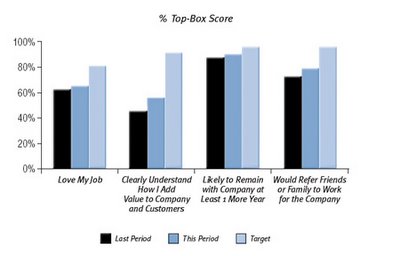Most large companies spend significant amounts of money on recruiting, training, and developing people in pursuit of productivity and growth. They engage training companies or universities to develop curriculum to improve the specifically desired skills either broadly across the marketing organization or in narrow functional pockets. It's only logical that if the desired outcomes are intended to create economic value, we should consider them to be just like any other element of the marketing mix and measure them on our dashboard.
Using the dashboard to monitor the percentage of your target employees that have achieved the requisite level of training, education, certification, or skill proficiency is mission critical and very appropriate. Succession eligibility is another useful metric for the overall health of the organization. There are two ways to view succession eligibility: first, as the percentage of your senior staff who have groomed replacements ready to step in for them; or second, as the overall percentage of marketing staff who are ready to step up to the next job if they had to. Either of these can be presented in stages of readiness ranging from not-at-all to ready-to-go, which will give you a more dimensional feeling for the progress your organization
is making.
 If success in your organization is directly related to employee proficiency and satisfaction, then monitoring employee feedback on your dashboard can be a terrific leading indicator. Many organizations have formal voice of the employee (VOE) programs that survey the employee population frequently on their knowledge, understanding, and enthusiasm for the company’s mission and strategy. Others choose to measure overall job satisfaction in the form of likelihood of referring a friend or family member to buy from or work for the company in the next 90 days. These make strong dashboard metrics to the degree they can be correlated to marketplace success.
If success in your organization is directly related to employee proficiency and satisfaction, then monitoring employee feedback on your dashboard can be a terrific leading indicator. Many organizations have formal voice of the employee (VOE) programs that survey the employee population frequently on their knowledge, understanding, and enthusiasm for the company’s mission and strategy. Others choose to measure overall job satisfaction in the form of likelihood of referring a friend or family member to buy from or work for the company in the next 90 days. These make strong dashboard metrics to the degree they can be correlated to marketplace success.
Like other metric categories, the key is trying to isolate the most relevant and predictive measures and then working to validate them over time. Just by tracking and featuring many of the prominent organizational evolution goals, you'll be sending the message that you are as committed to achieving them as you are to other marketplace outcomes.





No comments:
Post a Comment